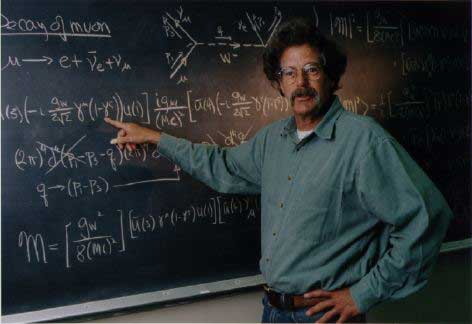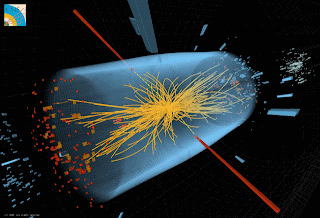Parçacık Fiziği 1 Ders Notları
Parçacık Fiziği dersini verdiğim zamanlarda hazırladığım ders notları. David Griffiths'in Introduction to Particle Physics kitabı ile birlikte kullanmak üzere hazırladım. Oldukça kapsamlı ve ek bilgiler içermektedir. Parçacık fiziği öğrenmek isteyenler için yardımcı olacak bir kaynak.Bölüm 0 - Bu bölümde Parçacık Fiziği hakkında temel kavramları tanıtılmaktadır. PDF
Klasik Fiziğin sonu ve Modern Fiziğin başlangıcı neresidir, Parçacıklar nasıl üretilir ve nasıl gözlemlenir. Parçacık Fiziği alanında kullanılan birim sistemi nedir? CERN nedir? Büyük Hadron Hızlandırıcısı ve CMS Deneyi. Higgs neye benziyor sorularına cevap vermektedir.
Bölüm 1-1 - Bu bölüm temel parçacık fiziğinin bir çeşit tarihçesi anlatılmaktadır, kısım 1. PDF
Bölüm 1-2 - Bu bölüm temel parçacık fiziğinin bir çeşit tarihçesi anlatılmaktadır, kısım 2. PDF
Çeşitli parçacıkların tarihsel olarak nasıl keşfedildiği ve büyük resmin neresine oturdukları hakkında görüş vermektedir. Temel parçacık için kullanılan bazı temel kavramlar açıklanmaktadır.
Bölüm 2 - Bu bölüm parçacıkların dinamiği anlatılmaktadır. PDF
Bu bölümde dört temel kuvvet, (Kuantum Elektrodinamiği, Kuantum Renk Dinamiği, Zayıf Etkileşmeler, Elektromanyetik Etkileşimler) Bozunumlar ve Korunum Yasaları ile Büyük Birleşme Senaryoları anlatılmaktadır.
Bölüm 3 - Bu bölüm parçacıkların göreli kinematiği anlatılmaktadır. PDF
Bu bölüm parçacıkların rölativistik çarpışmalarında enerji ve momentumun korunumunu ifade etmek için kullanılan dört vektör cebri ve bazı uygulamaları anlatılmaktadır. Klasik mekanik konularını yeni bir yaklaşım ile daha basit hesaplama yapılabilir.
Bölüm 4 - Bu bölüm parçacıkların etkileşimlerinde simetrinin önemi ve uygulaması anlatılmaktadır. Oldukça önemlidir. PDF
Simetriler, Gruplar ve Korunum Yasaları, Açısal Momentum, Çeşni Simetrileri ve Kesikli Simetriler anlatilmaktadır.
Bölüm 5 - Bu bölüm parçacıkların bağlı durumları incelenmektedir. PDF
Kuantum mekaniğinin önemli uygulamaları temel parçacıklardan oluşan bazı sistemlere uygulanmıştır. Hidrojenin spektrumunda görülen ince yapı ve bunun nasıl ortaya çıktığı anlatılmaktadır. Lamb kayması ve Aşırı ince yapı sabiti anlatılmıştır. Son olarak Pozitronyum ile Kuarkonyum incelenmiş ve kuark dalga fonksiyonlarının kendileri simetri ile birleşimi açıklanmıştır. (Eklenecektir)
#particle #physics











